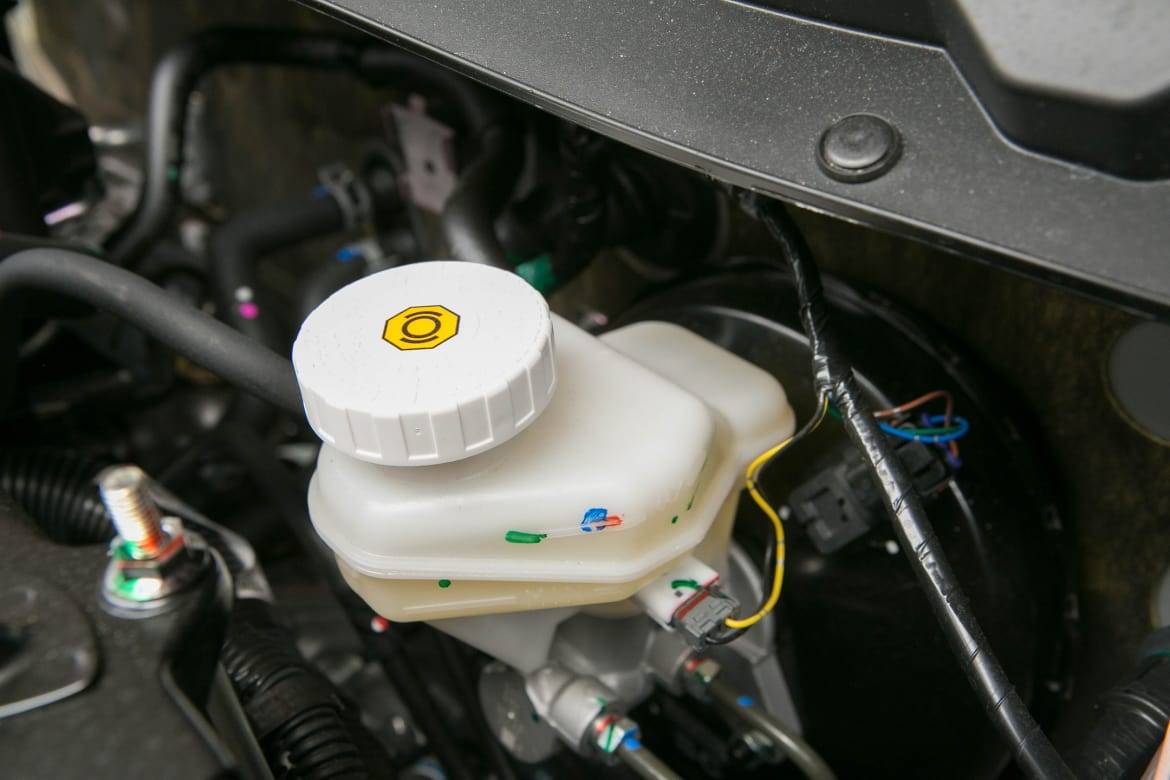Does Brake Fluid Need to Be Changed?


Editor’s note: For the latest information on brake maintenance, click here.
Changing brake fluid can be a slippery subject. Some manufacturers include it in their maintenance schedules and others don’t.
Mercedes-Benz, for example, says brake fluid should be flushed and replaced with new fluid every two years or 20,000 miles. Volkswagen says that a brake fluid flush should be done on most of its models every two years regardless of mileage. Subaru recommends fresh brake fluid every 30,000 miles.
Related: More Car Maintenance Coverage
On the other hand, most Chevrolet vehicles can go 150,000 miles or 10 years without a brake fluid change, according to Chevy’s maintenance schedule. And many Ford, Chrysler and Toyota vehicles don’t list replacing old brake fluid as a regular brake maintenance item the way they do oil changes or replacing transmission fluid.
Check your car’s owner’s manual to see what the manufacturer recommends for your brake system. You might also want to discuss the subject of brake fluid with a trusted mechanic if the manufacturer doesn’t give any guidance on a flush or some other brake job. Don’t be surprised if a mechanic suggests replacing the vehicle’s fluid periodically because mechanics probably have seen what can happen if you don’t.
Why is it important that brake fluid is in good condition? Even though fluid dwells in a sealed system, it still can absorb moisture over time, and that absorption can lead to corrosion in the brake system and brake lines. Moisture also lowers the boiling point of the fluid, and that can reduce a vehicle’s brake pedal effectiveness in repeated hard stops, or it could even lead to brake failure.
If the manufacturer lists a 10-year interval or none at all for replacing brake fluid, why do you need to have your brake fluid flushed, and how often should a fluid flush be done?
Every two or three years is probably too often for flushing, though if it helps you sleep at night, go for the flush. Just be aware that some service shops, especially those that make their living by replacing fluids, might try to scare you with dire warnings that a brake disaster is imminent unless you flush all your vehicle’s fluids long before it is necessary.
Unless the manufacturer calls for it sooner, we would wait four or five years for a flush and have old fluid replaced at the same time as other brake component work, such as replacing brake pads, calipers or rotors. Replacing brake fluid is cheaper than replacing brake lines or a master cylinder that has corroded, so don’t automatically dismiss the brake recommendation of a mechanic as just salesmanship.
And no matter who suggests fresh fluid, make sure the brake fluid replacement is done with the type that is called for by the vehicle manufacturer. Some vehicles require DOT 3 fluid, others a different variety, such as DOT 5 fluid, so consult your owner’s manual before you give the go ahead.
Cars.com’s Editorial department is your source for automotive news and reviews. In line with Cars.com’s long-standing ethics policy, editors and reviewers don’t accept gifts or free trips from automakers. The Editorial department is independent of Cars.com’s advertising, sales and sponsored content departments.

Contributor Rick Popely has covered the auto industry for decades and hosts a weekly online radio show on TalkZone.com.
Featured stories




